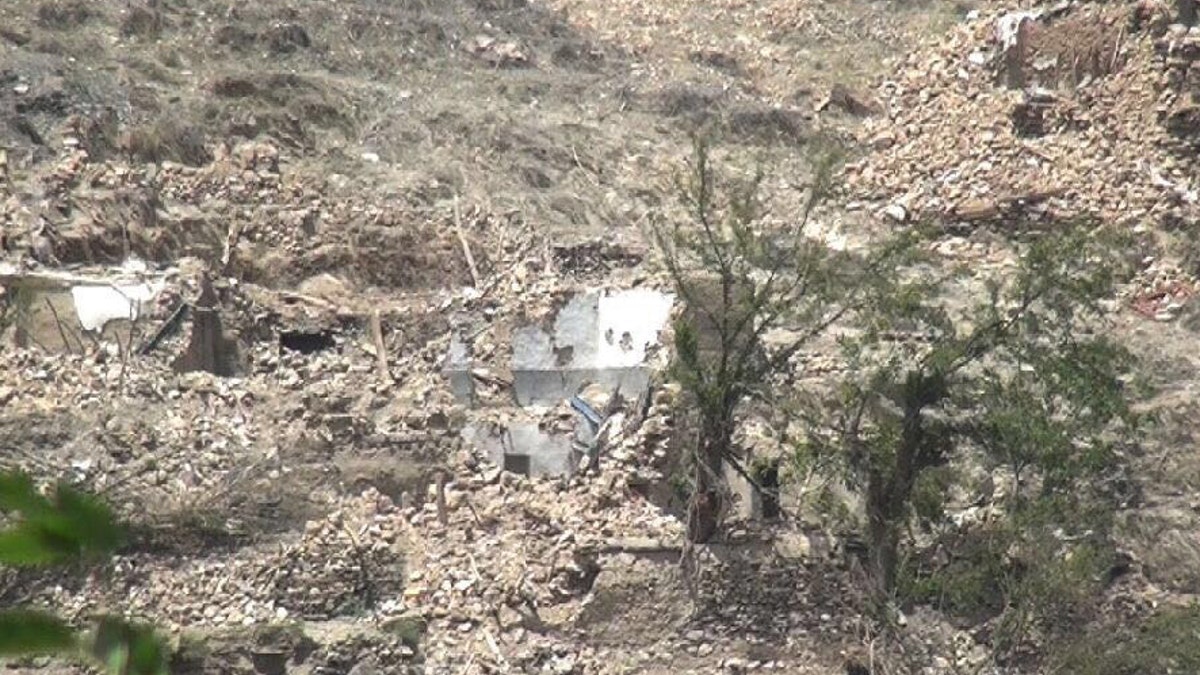EXCLUSIVE: KABUL, Afghanistan – It has been one month since the U.S. military dropped its largest non-nuclear combat weapon -- the MOAB -- to eradicate ISIS from its base in Afghanistan's Nanganhar province. And still, the ghostly destruction zone is a vision that haunts.
FoxNews.com has obtained exclusive images illuminating the bomb’s impact taken this week, showing the gouged and singed earth and even the limb of a dead fighter that had yet to be removed or buried.
While the use of the MOAB, which stands for Massive Ordnance Air Blast, has been controversial, with analysts claiming it had little effect other than decimating Afghanistan's territory, others on the ground are still insistent that it worked extremely well, not only to kill more than 90 ISIS fighters, but to eliminate supply routes and squash morale within the terrorist organization.
"This was very effective -- many of ISIS' training camps are gone, bunkers destroyed," Gen. Qadamshah Shahim, chief of the general staff of the Afghan Ministry of Defense, who just stepped down from his role following the Mazar-i-Sharif attack, told Fox News.
But according to one high-ranking Afghan defense official, who requested anonymity due to the sensitive nature of the topic, the decision to use the MOAB was not taken hastily. Rather, it was a carefully calculated move.

Opening of an ISIS tunnel destroyed by MOAB (Hollie McKay/Fox News)
The official said that a request to use such a weapon -- one designed to penetrate the earth's surface and thus destroy underground tunnels and dwellings -- was brought to the attention of Afghan officials several months ago, and wasn't given the green light until all other options were explored and potential collateral damage and effectiveness studied.
"This was the only solution to bring stability to the area and avoid more bloodshed by this brutal terrorist group," said Commander Ahmad Muslem Hayat, a former military attaché for Afghanistan's British Embassy and current security adviser for the U.S.-based firm, TigerSwan. "This wasn't about sending quick messages to show strength to other threatening countries like North Korea. This was about saving innocent Afghan lives from ISIS torture."
Capt. William Salvin, a U.S. military spokesman in Kabul, defended the use of the MOAB, saying it was used for a “specific tactical purpose on the battlefield.”
Nonetheless, the area remains a no-go zone for all.

Buildings destroyed by MOAB (Hollie McKay/Fox News)
It is not yet clear whether U.S. forces -- which are currently revising the battle strategy toward the increasingly unstable Afghanistan -- intend to deploy such a large-scale weapon anytime in the near future. But there is a growing sentiment among the Afghan people for such attention to be devoted to defeating Taliban hubs, too, which they view as a much greater threat to their safety than the country's fast weakening ISIS branch.
"Different flags, different names," noted Major Abadullah Karimi, spokesperson for the 202nd Shamshad Police Corps, the headquarters for operations in eastern Afghanistan. "But the same games."




















